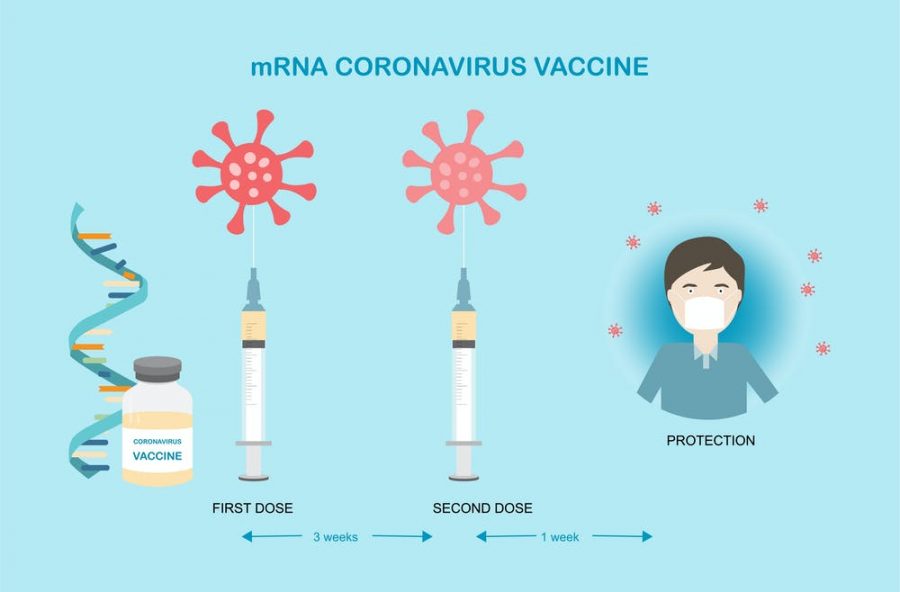We are at the beginning of the end of the Coronavirus. True, the road is still very long and subject to change, but recent developments in vaccine technology have made it possible to mitigate the virus and allow for a realistic end to the global pandemic.
This update in technology comes in the form of messenger RNA (mRNA) vaccinology. However, to fully understand this breakthrough, one must have an understanding of the traditional vaccine.
Typical vaccines contain a weakened form of a live virus which contains genetic material from that virus. This method of delivery is called a viral vector, and when this viral vector enters our cells, it gives our cells instructions how to build a protein that is unique to the virus. Once the body has these instructions to build this protein, it copies the protein in the body and builds up a resistance to it. The body then ‘remembers’ the protein and how to fight it (and, therefore, it also remembers the virus.) If the virus enters the body, white blood cells will produce antibodies to fight the virus quite effectively, as the body recognizes the virus.
While mRNA technology is similar to that of viral vectors, the key difference comes in the method of delivery of genetic material. Contrasting from traditional vaccines, mRNA vaccines contain genetic material from a real virus – in the Covid vaccine, this material is dubbed a “spike protein” – and this material gives our cells the instructions to build harmless proteins that are unique to the virus. This harmless protein then multiplies and the body builds up immunity to it and ‘remembers’ how to fight it; so, if the virus does enter the body, white blood cells produce antibodies to easily kill the virus.
It seems difficult to understand and the differences between the two vaccines seem minimal, but this technology exemplifies an astounding breakthrough in vaccinology. The Covid mRNA is the first of its kind, as no other mRNA vaccines have been developed.
A key part of these vaccines comes in their manufacturing. This is because mRNA vaccines can be developed easily, as they only require the genetic structure of the virus to be made. This allowed for the speed at which the vaccine was developed and released to be quicker. In Covid’s case, scientists globally had identified the structure of every gene in the virus and began on the vaccine with this information about the spike protein. Scientists had a vaccine that was animal-testing ready within eleven months; in the past, no other vaccine had been developed successfully in under four years.
However, like all infant innovation, this new technology comes with its downsides. A key detriment to the Covid mRNA vaccine comes in the form of regulatory hurdles. Since it truly is the first of its kind, this new vaccine was subject to a great deal of testing requirements and regulations, which hinders it and others like it from reaching consumers.
Another detriment of the new tech can be seen in the strength of the vaccine. Because mRNA vaccines only allow a specific, small piece of the virus to enter the body, the immune system response will not be as strong as it would with traditional vaccines. This means that multiple booster shots will be necessary to provide an adequate fight against the virus.












